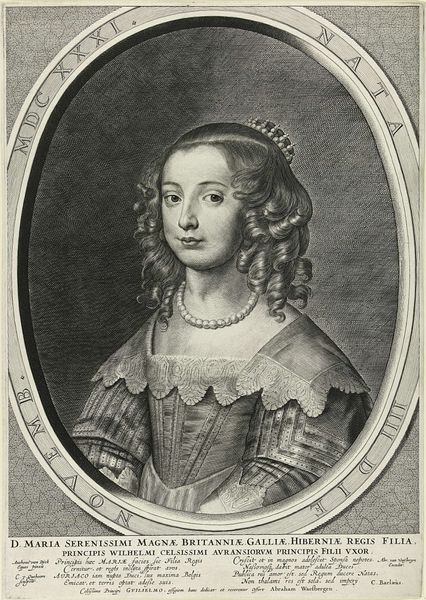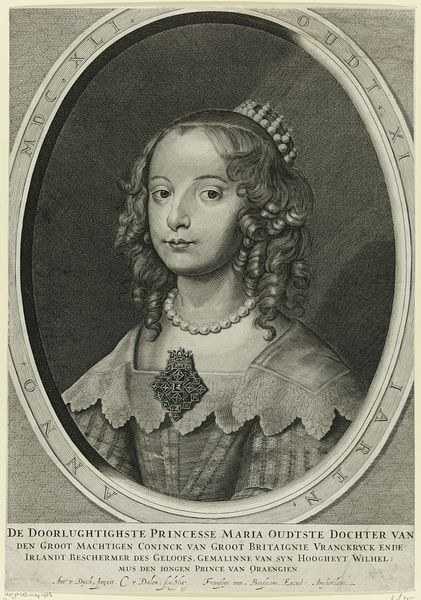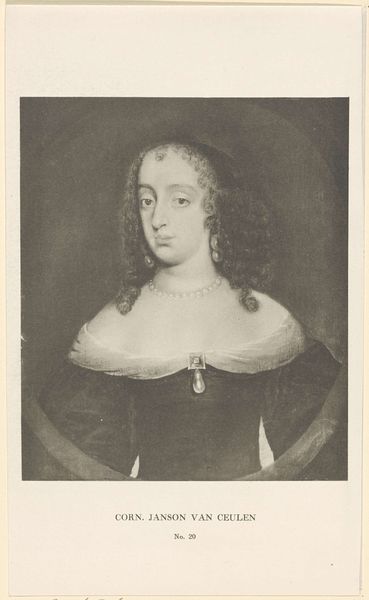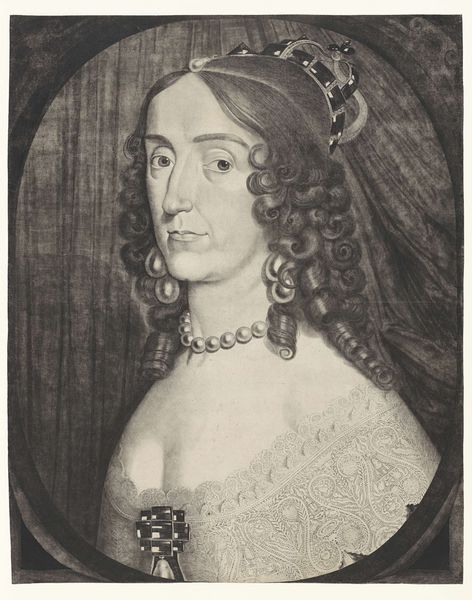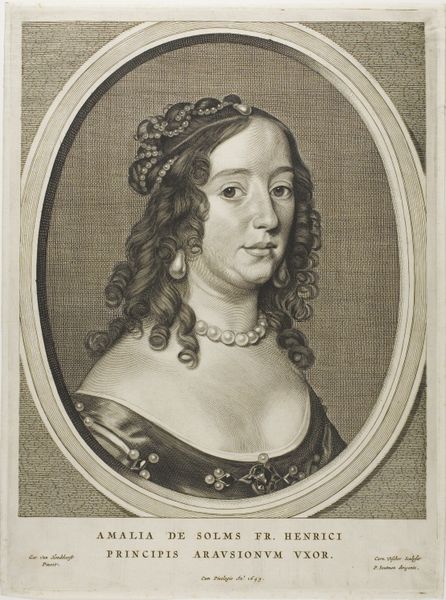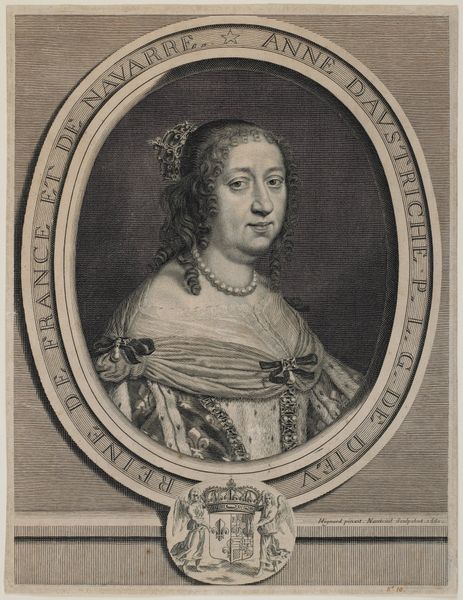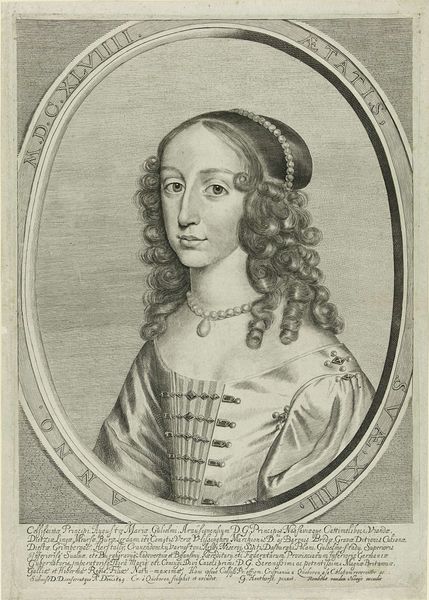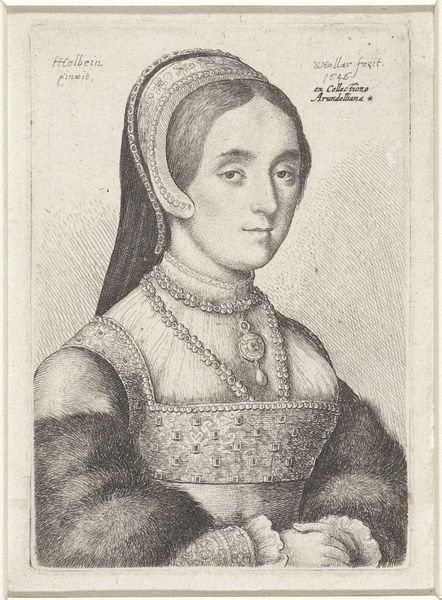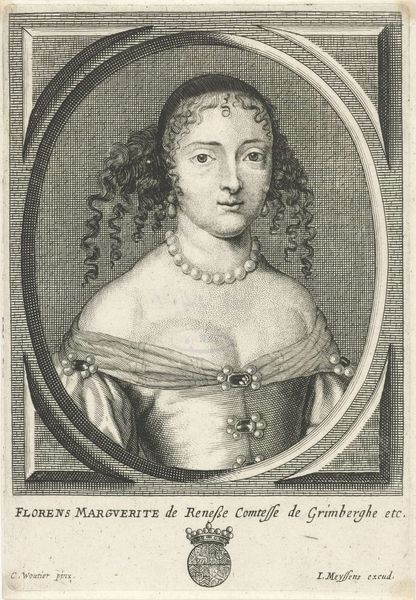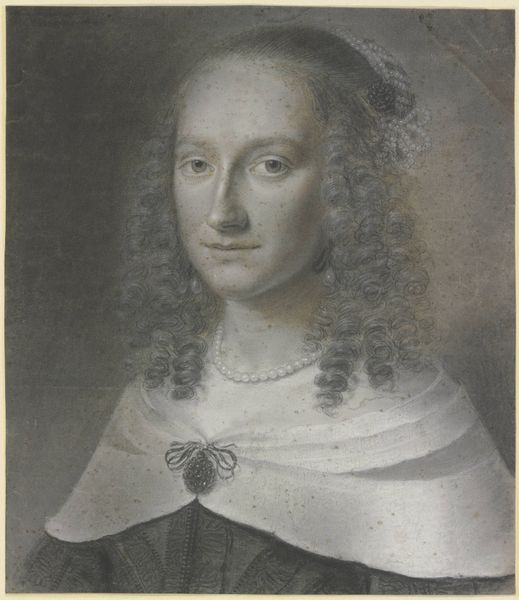
print, engraving
#
baroque
# print
#
charcoal drawing
#
portrait reference
#
pencil drawing
#
portrait drawing
#
engraving
Dimensions: height 542 mm, width 414 mm
Copyright: Rijks Museum: Open Domain
Curator: Looking at this print, the face almost swims out of the dark background—there's an almost melancholic softness. Editor: This is a portrait of Queen Mary Stuart; the print is attributed to Ludwig von Siegen and was created sometime between 1642 and 1680. Von Siegen was quite important in the history of printmaking, actually. Curator: Well, whatever he did, technically, he captured something about her. Her eyes seem to hold so many secrets. I mean, look at how they used light to create the highlights in her hair—it’s mesmerizing. Editor: Von Siegen is credited as one of the inventors of mezzotint, a printmaking process that allows for rich tonal range and subtle gradations of light and shadow. Curator: That explains it! It has this velvety texture. The detail in her lace collar is incredible! How do you get that level of detail without it becoming hard or mechanical? Editor: Exactly! It’s interesting how this technique became associated with reproducing portraits of nobility. It’s almost like the softness and richness of the medium became part of the message itself. This print also demonstrates the political role of portraiture at the time, by capturing royal images for a wider audience. Curator: That makes me wonder about who saw this, held it, maybe even put it on their wall? Were they captivated by the queen's expression like I am? The piece gives a little glimpse into someone else’s experience, long ago. Editor: Absolutely, the materiality of this artwork really connects it to a broader European visual culture. Think of how prints like this moved and circulated and were remixed over and over. That speaks to how power works, even in representational imagery. Curator: This piece is a little like stepping into another era—experiencing echoes of something that lived and breathed. Editor: Agreed. Examining works like this enables one to explore the narratives of representation, influence, and artistic ingenuity that are integral to our comprehension of both history and art.
Comments
No comments
Be the first to comment and join the conversation on the ultimate creative platform.
